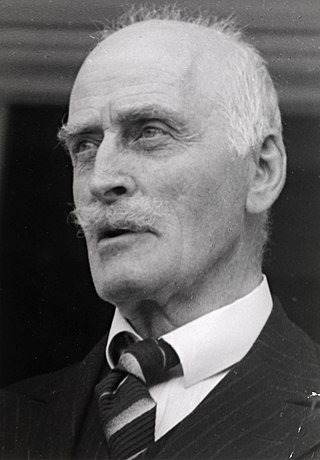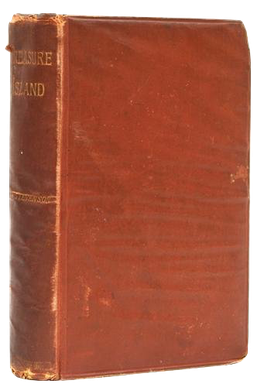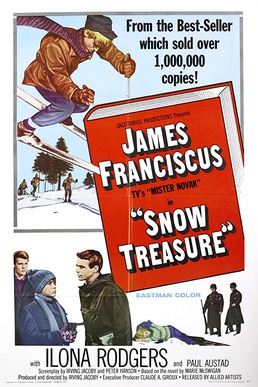
Knut Hamsun was a Norwegian writer who was awarded the Nobel Prize in Literature in 1920. Hamsun's work spans more than 70 years and shows variation with regard to consciousness, subject, perspective and environment. He published more than 20 novels, a collection of poetry, some short stories and plays, a travelogue, works of non-fiction and some essays.

A sled, skid, sledge, or sleigh is a land vehicle that slides across a surface, usually of ice or snow. It is built with either a smooth underside or a separate body supported by two or more smooth, relatively narrow, longitudinal runners similar in principle to skis. This reduces the amount of friction, which helps to carry heavy loads.

Treasure Island is an adventure novel by Scottish author Robert Louis Stevenson, telling a story of "buccaneers and buried gold". It is considered a coming-of-age story and is noted for its atmosphere, characters, and action.

The Famous Five is a series of children's adventure novels and short stories written by English author Enid Blyton. The first book, Five on a Treasure Island, was published in 1942. The novels feature the adventures of a group of young children – Julian, Dick, Anne, George and their dog Timmy.

The Iditarod Trail Sled Dog Race, more commonly known as The Iditarod, is an annual long-distance sled dog race run in early March. It travels from Anchorage to Nome, entirely within the US state of Alaska. Mushers and a team of between 12 and 14 dogs, of which at least 5 must be on the towline at the finish line, cover the distance in 8–15 days or more. The Iditarod began in 1973 as an event to test the best sled dog mushers and teams but evolved into today's highly competitive race.

A sled dog is a dog trained and used to pull a land vehicle in harness, most commonly a sled over snow.

SS Central America, known as the Ship of Gold, was a 280-foot (85 m) sidewheel steamer that operated between Central America and the East Coast of the United States during the 1850s. She was originally named the SS George Law, after George Law of New York. The ship sank in a hurricane in September 1857, along with 425 of her 578 passengers and crew and 30,000 pounds (13,600 kg) of gold, contributing to the Panic of 1857.

Yamashita's gold, also referred to as the Yamashita treasure, is the name given to the alleged war loot stolen in Southeast Asia by Imperial Japanese forces during World War II and supposedly hidden in caves, tunnels, or underground complexes in different cities in the Philippines. It was named after the Japanese general Tomoyuki Yamashita, dubbed as "The Tiger of Malaya", who conquered Malaya within 70 days from the British. Though there are accounts that claim the treasure remains hidden in the Philippines and have lured treasure hunters from around the world for over 50 years, its existence has been dismissed by most experts. The rumored treasure was the subject of a complex lawsuit that was filed in a Hawaiian state court in 1988 involving a Filipino treasure hunter, Rogelio Roxas, and the former Philippine president, Ferdinand Marcos.

Sledding, sledging or sleighing is a winter sport typically carried out in a prone or seated position on a vehicle generically known as a sled, a sledge (British), or a sleigh. It is the basis of three Olympic sports: luge, skeleton and bobsledding. When practised on sand, it is known as a form of sandboarding. In Russia sledges are used for maritime activities including fishing and commuting from island to island on ice.

The Secret of the Unicorn is the eleventh volume of The Adventures of Tintin, the comics series by Belgian cartoonist Hergé. The story was serialised daily in Le Soir, Belgium's leading francophone newspaper, from June 1942 to January 1943 amidst the Nazi German occupation of Belgium during World War II. The story revolves around young reporter Tintin, his dog Snowy, and his friend Captain Haddock, who discover a riddle left by Haddock's ancestor, the 17th century Sir Francis Haddock, which could lead them to the hidden treasure of the pirate Red Rackham. To unravel the riddle, Tintin and Haddock must obtain three identical models of Sir Francis's ship, the Unicorn, but they discover that criminals are also after these model ships and are willing to kill in order to obtain them.

Auric Goldfinger is a fictional character and the main antagonist in Ian Fleming's 1959 seventh James Bond novel, Goldfinger, and the 1964 film it inspired. His first name, Auric, is an adjective meaning "of gold". Fleming chose the name to commemorate the architect Ernő Goldfinger, who had built his home in Hampstead near Fleming's; it is possible, though unlikely, that he disliked Goldfinger's style of architecture and destruction of Victorian terraces and decided to name a memorable villain after him. According to a 1965 Forbes article and The New York Times, the Goldfinger persona was based on gold mining magnate Charles W. Engelhard, Jr.

Captain J. Flint is a fictional golden age pirate captain who features in a number of novels, television series, and films. The original character was created by the Scottish writer Robert Louis Stevenson (1850–1894). Flint first appears in the classic adventure yarn Treasure Island, which was first serialised in a children's magazine in 1881, and later published as a novel in 1883.

Goldfinder is a 2001 autobiography of British diver and treasure hunter Keith Jessop. It tells the story of Jessop's life and salvaging such underwater treasures as HMS Edinburgh, one of the greatest deep sea salvage operations and most financially rewarding in history.
The Flight of the Norwegian National Treasury was the transfer of Norway's gold reserves to the United States via the United Kingdom, to avoid them falling into the hands of Nazi Germany.
Kimberly is a ghost town in the northwest corner of Piute County, Utah, United States. Located high in Mill Canyon on the side of Gold Mountain in the Tushar Mountains, Kimberly was formerly a gold mining town. Originally settled in the 1890s, it lasted until 1910. Kimberly had a minor rebirth in the 1930s, but has been uninhabited since approximately 1938. The town is perhaps best known as the birthplace of Ivy Baker Priest, a former United States Treasurer.

The Golden Keel is the debut novel by English author Desmond Bagley, first published in 1963. Written in the first person narrative, the introductory biography of the protagonist is closely patterned after that of the author.

Hiltgunt Margret Zassenhaus was a German philologist who worked as an interpreter in Hamburg, Germany during World War II, and later as a physician in the United States. She was honoured for her efforts to aid prisoners in Nazi Germany during World War II.

Mary Agnes Reardon (1912–2002) was a Catholic liturgical artist; she was a painter, muralist, designer and illustrator of children's books.

Operation Fish was the World War II evacuation of British wealth from the UK to Canada. It was the largest known movement of wealth in history, where most of the UK's gold reserves were removed from London and shipped to Canada during the Second World War.

Snow Treasure is a 1968 American adventure film directed by Irving Jacoby and starring James Franciscus, Ilona Rodgers and Tor Stokke. It is based on the 1942 novel Snow Treasure by Marie McSwigan, set during the German occupation of Norway during World War II.


















